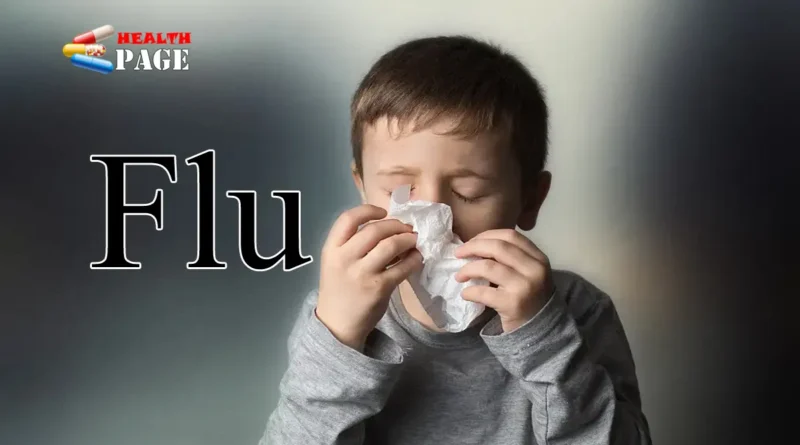What discomforts will you experience when you have the flu?
Influenza (flu) is a viral infection of the lungs and airways caused by certain influenza viruses. It causes fever, runny nose, sore throat, cough, headache, muscle aches (myalgia), and a general feeling of illness (malaise).
The virus is spread by inhaling droplets expelled when an infected person coughs or sneezes, or by direct contact with nasal secretions from an infected person.
The initial symptoms of influenza are chills, followed by fever, muscle aches, headache, sore throat, cough, runny nose, and a general feeling of illness.
It is usually diagnosed based on symptoms.
Getting it shot every year is the best way to prevent it.
Rest, drinking plenty of fluids, and avoiding exertion help people recover. Pain relievers, decongestants, and sometimes certain antiviral drugs can also be taken.
Influenza is completely different from the common cold. It is caused by a different virus and can produce more severe symptoms. Influenza also affects the deep respiratory tract.
Symptoms and signs of the flu
The incubation period for influenza is generally 1-3 days (several hours to 4 days). It can present with an acute onset of high fever and severe systemic symptoms, while respiratory symptoms may be milder, including chills, fever, headache, fatigue, and body aches. The fever can reach as high as 39-40°C. After 2-3 days, the fever gradually subsides, and systemic symptoms gradually improve. However, upper respiratory symptoms such as nasal congestion, runny nose, sore throat, and dry cough become more pronounced.
A small number of patients may experience mild gastrointestinal symptoms such as nose bleeding, loss of appetite, nausea, constipation or diarrhea.
Patients may experience flushed cheeks, mild conjunctival congestion and eye tenderness, pharyngeal congestion, and herpes on the oral mucosa. A doctor’s chest auscultation may only detect increased breath sounds and an occasional pleural friction rub. Even after symptoms subside, patients may still feel weak, have a low spirit, and experience slow recovery.
Complicated pneumonia
1. Primary viral pneumonia
Primary viral pneumonia is more common in patients with pre-existing heart or lung diseases (especially rheumatic heart disease and mitral stenosis) or pregnant women. Clinically, it manifests as persistent high fever, shortness of breath, cyanosis, paroxysmal cough, and hemoptysis. Physical examination reveals low breath sounds and wheezing in both lungs. The course of the disease can be as long as 3-4 weeks. Blood tests reveal low white blood cell counts and neutropenia. Imaging studies show scattered flocculent shadows in the lungs on both sides. Patients may die from heart failure or peripheral circulatory failure. Sputum and blood cultures show no growth of pathogenic bacteria, but influenza viruses are easily isolated from sputum. Antimicrobial treatment is ineffective, and the mortality rate is high. Early use of oseltamivir (trade name: Tamiflu) is effective.
Related reading:
2. Secondary bacterial pneumonia
Symptoms begin with simple influenza, which worsens 2-4 days later, with elevated fever and chills, obvious systemic toxicity, increased coughing, purulent sputum, and chest pain. Physical examinations reveal dyspnea, cyanosis, moist rales throughout the lungs, and signs of consolidation or focal pneumonia. Blood tests reveal significantly elevated white blood cell and neutrophil counts. While influenza viruses are difficult to isolate, pathogenic bacteria such as Staphylococcus aureus, Streptococcus pneumoniae, and Haemophilus influenzae can be found in sputum.
3. Mixed viral and bacterial pneumonia
Influenza virus and bacterial pneumonia coexist. The onset is acute, with persistent high fever and a more serious condition, which may present as bronchopneumonia or lobar pneumonia.
Other complications
1. Reye’s syndrome
It is a hepatic and neurological complication of influenza A and B, and can also occur with herpes zoster virus infection. It is generally limited to children aged 2-16 years. Because it is associated with influenza, it can occur in outbreaks. Clinically, several days after the acute respiratory infection subsides, nausea and vomiting occur, followed by neurological symptoms such as lethargy, coma, and convulsions. There is liver enlargement, but no jaundice. Cerebrospinal fluid examination is normal, with no signs of encephalitis. Blood ammonia may be elevated, and liver function may be mildly impaired. The cause is unknown, but aspirin may be involved.
Related reading:
2. Toxic shock syndrome
Most cases develop after an influenza outbreak, accompanied by respiratory failure and acute respiratory distress syndrome (ARDS) on imaging, but with minimal pneumonia. Flu antibodies are elevated in the blood, and pathogenic bacteria can be found in airway secretions.
Related reading:
3. Rhabdomyolysis
Local or systemic skeletal muscle necrosis is manifested as muscle pain and weakness, elevated muscle enzymes and electrolyte imbalance, and may lead to acute renal failure.
Related reading:
4. Other central nervous system complications
Encephalitis, acute necrotizing encephalopathy, myelitis, etc.
How to Prevent it?
1. Vaccination
Flu vaccination is the most effective way to prevent influenza , significantly reducing the risk of contracting it and developing serious complications. Annual vaccination is recommended for people aged 60 and above, children aged 6 months to 5 years, pregnant women, family members and caregivers of children under 6 months, patients with chronic diseases, and healthcare workers .
2. Drug prevention .
Drug prevention cannot replace vaccination. It can only be used as an emergency temporary preventive measure for people at high risk of severe influenza who have not been vaccinated or have not yet acquired immunity after vaccination. Oseltamivir , zanamivir , etc. can be used.
3. General preventive measures.
Maintaining good personal hygiene habits is an important means of preventing respiratory infections such as influenza. The main measures include:
1. Enhance physical fitness and immunity;
2. Wash your hands frequently;
3. Keep the environment clean and ventilated;
4. Minimize activities in crowded places and avoid contact with patients with respiratory infections;
5. Maintain good respiratory hygiene habits. When coughing or sneezing, cover your mouth and nose with your upper arm or a tissue or towel. Wash your hands after coughing or sneezing, and try to avoid touching your eyes, nose, or mouth.
6. If you experience symptoms of respiratory infection, you should rest at home and seek medical attention as soon as possible.



Pingback: Saline Nasal Spray: 7 Amazing Benefits for Congestion, Babies & Everyday Relief